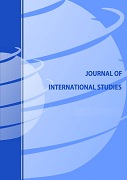ASSESSING HYBRID MONETARY FUNCTION REACTIONS IN TRANSITION ECONOMIES
ASSESSING HYBRID MONETARY FUNCTION REACTIONS IN TRANSITION ECONOMIES
Author(s): Mohamed El-Hodiri, Fredj Jawadi, Bulat Mintayevich MukhamediyevSubject(s): Economic policy, Transformation Period (1990 - 2010), Present Times (2010 - today), Financial Markets, Fiscal Politics / Budgeting
Published by: Fundacja Centrum Badań Socjologicznych
Keywords: hybrid monetary policy rule; transition countries; global financial crisis; Eastern Europe; the Commonwealth of Independent States;
Summary/Abstract: This paper specifies and estimates hybrid monetary policy reaction functions in five countries of the Eastern Europe (Bulgaria, Czech Republic, Hungary, Poland, and Romania) and four post-Soviet countries (Belarus, Russia, Kazakhstan, and Ukraine) during the transition period. The problem of choosing an effective monetary policy is essential and is of significant interest in developing economies. The assessed reactions made it possible to compare monetary policy goals in these countries and their changes due to the recent global financial and economic crisis. The calculations carried out by the generalized method of moments based on the quarterly data for 1998-2018 showed that in all the countries under consideration, price containment was the primary goal of monetary policy. Along with it, monetary authorities adhered to their alternative goals. Moreover, due to the financial and economic crisis, countries mainly began to less support economic growth and the accumulation of gold and foreign exchange reserves while increasing attention to stabilizing the exchange rate and the real effective exchange rate.
Journal: Journal of International Studies
- Issue Year: 13/2020
- Issue No: 4
- Page Range: 110-127
- Page Count: 18
- Language: English

